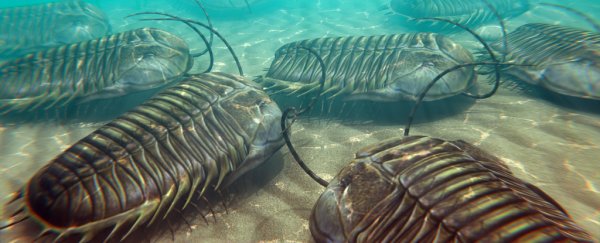As the content of Earth's atmosphere changes over time, so might the course of animal evolution itself.
An international team of researchers now thinks that swinging oxygen levels somehow orchestrated the boom and bust of our planet's fauna, like the conductor of a living symphony.
For the first time, their research has linked the rapid appearance of animal life during the Cambrian explosion with a surge in atmospheric oxygen levels, while also showing that mass extinction events involved a corresponding slump in oxygen.
"The complex creatures that came about during the Cambrian explosion were the precursors to many of the modern animals we see today," explains geochemist Tianchen He from the University of Leeds.
"But because there is no direct record of atmospheric oxygen during this time period it has been difficult to determine what factors might have kickstarted this crucial point in evolution."
The answer turned out to be hidden in Siberia – a region called the Siberian Platform, which was once a shallow sea, and was home to half of all the discovered fossilised species known to be alive during Cambrian times.
Analysing ancient limestone samples from two rivers in this area, researchers were able to create a model that compares carbon and sulfur cycles, estimated oxygen levels, and animal diversity from more than half a billion years ago.
Their findings reveal that during times of high oxygen, the shallow ocean experienced pulses of animal diversification, providing a possible explanation for the "stepwise nature" of the Cambrian explosion.
"In the modern and ancient oceans, well-oxygenated waters are generally associated with larger body sizes, higher diversity, advanced skeletal biomineralisation and increased motility and carnivory," the authors write, further explaining how this increased many habitats, providing new opportunities for animal expansion and emergence.
On the flip side, during times of low oxygen - in the early Cambrian, for instance - the researchers noted a "prolonged pause" in diversification, lasting over 20 million years and causing several waves of extinction.
The origins of the Cambrian explosion have been puzzling scientists for years, and the role of oxygen is hotly debated. These new findings give strong support to the most popular scientific narrative, which suggests that new animal body structures and lifestyles were associated with much higher oxygen demands, and that this could have played an important role in regulating the pattern of life we see today.
"This is the first study to show clearly that our earliest animal ancestors experienced a series of evolutionary radiations and bottlenecks caused by extreme changes in atmospheric oxygen levels," says co-author Graham Shields from University College London.
"In that time, Earth went from being populated by simple, single-celled, and immobile organisms to hosting the wonderful variety of intricate, energetic life forms we see today."
This study has been published in Nature Geoscience.
Editor's note (11 May 2019): An earlier version of this article had a cover image of animals that definitely weren't around during the Cambrian explosion. We have now rectified the error.
